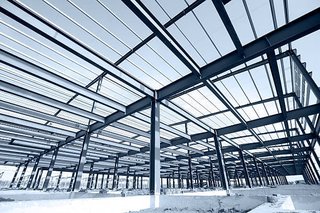The Rise of Steel Structure Construction: A Modern Marvel in Engineering
The Rise of Steel Structure Construction: A Modern Marvel in Engineering
Blog Article
Cost of Metal Buildings has revolutionized just how we build. From towering skyscrapers to expansive industrial warehouses, steel has become a go-to material nowadays in this construction industry. Its strength, versatility, and efficiency convert it into a preferred choice for architects, engineers, and developers worldwide.
What is Steel Structure Construction?
Steel structure construction means method of creating frameworks and buildings using structural steel—an alloy made primarily of iron and carbon, with elements to enhance its strength and resistance. Structural steel members, for example beams, columns, trusses, and girders, are fabricated then assembled on-site in order to create the skeleton of the structure.
Advantages of Steel Structure Construction
1. High Strength-to-Weight Ratio
Steel is quite a bit stronger than other building materials like wood or concrete, which allows for longer spans and taller buildings with less material.
2. Durability
Steel structures are resistance against pests, mold, fire, and harsh conditions. They require less maintenance as time passes and have a longer lifespan.
3. Speed of Construction
Prefabricated steel components may be quickly assembled on-site, reducing overall construction time. This is especially essential in projects with tight schedules.
4. Flexibility and Adaptability
Steel frames enable easy modifications and future expansion. It's also more worthy of creative architectural designs because of its flexibility.
5. Eco-Friendly
Steel is 100% recyclable. Structures could be dismantled and also the steel reused without degrading its properties, rendering it a sustainable construction choice.
Common Applications
Commercial Buildings: Skyscrapers, office complexes, and malls make use of steel’s strength and design flexibility.
Industrial Facilities: Factories, warehouses, and plants often use steel structures for their large open spans and durability.
Infrastructure: Bridges, airports, and stadiums rely heavily on steel for their load-bearing needs.
Residential Buildings: Modern homes and apartment buildings increasingly incorporate steel because of its clean aesthetics and structural advantages.
Challenges in Steel Structure Construction
While steel construction offers numerous benefits, in addition, it presents a number of challenges:
Cost: Initial costs might be higher than traditional methods, though offset by long-term savings and faster project completion.
Corrosion: In certain environments, steel can be susceptible to rust if not properly treated or coated.
Thermal Conductivity: Steel conducts heat quickly, requiring additional insulation in buildings for energy efficiency.
Future Trends
With advancements in fabrication technology, Building Information Modeling (BIM), and 3D printing, steel structure construction is evolving rapidly. Modular and prefabricated steel buildings are gaining popularity, and the demand for green building solutions ensures that steel remains a vital component in sustainable construction.
Steel structure construction stands at the forefront of modern engineering, combining durability, efficiency, and innovation. Whether it’s shaping city skylines or building the backbone of industry, steel continues to play a crucial role in constructing the future.